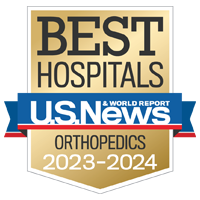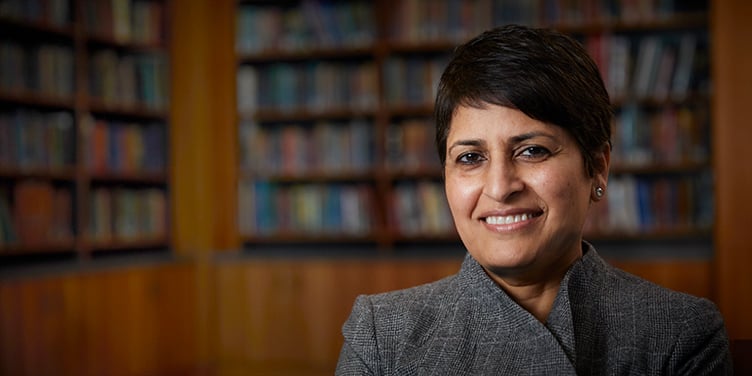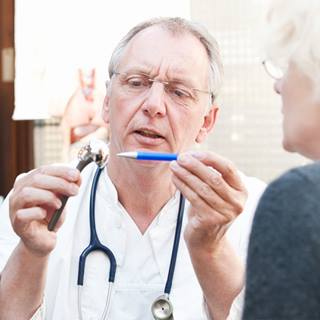Arthritis of the Shoulder

Overview
Arthritis is a degenerative condition that involves losing cartilage in a joint. Joint cartilage is the smooth tissue covering the ends of bones that lets the joints move easily. Cartilage can be injured or lost over time as the result of many conditions, including primary osteoarthritis (normal wear and tear); inflammatory conditions, such as rheumatoid arthritis or psoriatic arthritis; or a history of previous injuries, such as shoulder dislocations or broken bones. Arthritis can also develop in the shoulder after long-standing rotator cuff tears, a condition known as cuff tear arthropathy.
The shoulder area has two joints. One is located where the collarbone (clavicle) meets the acromion, the tip of the shoulder blade (scapula). This is called the acromioclavicular – or AC – joint. The other, called the glenohumeral joint, is at the junction of the upper arm bone (humerus) and the shoulder blade. Arthritis can affect either joint or both. To provide you with an effective treatment plan, your doctor needs to determine which joint is affected and which type of arthritis you have.
Our approach to arthritis of the shoulder
In treating shoulder arthritis, our goals are to relieve pain and restore function. We begin with nonsurgical approaches, such as oral anti-inflammatory medications, ice and heat application, and physical therapy. If these measures don't bring relief, surgery may be necessary. Surgical treatment generally works well to reduce pain and restore range of motion.
UCSF is a national leader in shoulder replacement surgery. We closely follow our patients' outcomes to ensure that we are constantly improving and refining our methods. UCSF often has ongoing research studies of shoulder replacement; interested patients may be able to participate.
Awards & recognition
-

Among the top hospitals in the nation
-

One of the nation's best for orthopedic care
Signs & symptoms
The most common symptom of shoulder arthritis is pain that is aggravated by activity and progressively worsens. If the glenohumeral joint is affected, the pain is centered in the back of the shoulder and may intensify with changes in the weather. Pain from the AC joint is focused on the front of the shoulder. Someone with rheumatoid arthritis may have pain in both areas if both joints are affected.
Other symptoms may include stiffness, difficulty using the arm (even for routine activities) and trouble sleeping. Arthritis pain and degree of functional impact can range in severity from mild to debilitating.
Diagnosis
Doctors diagnose shoulder arthritis by asking about symptoms; performing a thorough physical exam, which includes checking range of motion in the joint and muscle strength in the area; and examining images, such as X-rays, of the shoulder.
During the physical exam, your doctor will check for:
- Weakness (atrophy) in the muscles
- Tenderness when the area is touched
- Pain when pressure is placed on the joint
- Extent of passive (assisted) and active (self-directed) range of motion
- Any signs of injury to the muscles, tendons, ligaments surrounding the joint
- Signs of previous injury
- Involvement of other joints (an indication of rheumatoid arthritis)
- Crepitus (a grating sensation inside the joint) with movement
An X-ray image of an arthritic shoulder will show a narrowing of the joint space, changes in the bone and the formation of bone spurs (osteophytes). At times, an MRI is used to better evaluate the rotator cuff tendons, and a CT scan may be used to provide a 3D evaluation of the shoulder bones.
Treatments
As with other arthritic conditions, initial treatment of shoulder arthritis is usually nonsurgical. Useful therapies include:
- Resting the area as much as possible, and modifying normal activities to avoid provoking pain
- Physical therapy
- Moist heat
- Nonsteroidal anti-inflammatory medications (NSAIDs), such as aspirin or ibuprofen, to reduce inflammation
- Icing the shoulder for 20 to 30 minutes two or three times a day
- If you have rheumatoid arthritis, your doctor may prescribe a disease-modifying medication, such as methotrexate, or recommend corticosteroid injections
- Dietary supplements, such as glucosamine and chondroitin sulfate (Note: The Food and Drug Administration does not test dietary supplements. These compounds may have negative interactions with other medications. Consult your doctor before taking any dietary supplement.)
There are currently no treatment options that reliably restore cartilage, reverse arthritis or prevent progressive degeneration in the shoulder. There's certainly much interest in developing these types of treatments, with researchers actively exploring possible techniques. Also, no scientific evidence has supported the use of platelet-rich plasma (PRP) or stem cell injections for the shoulder.
Surgical treatment
When nonsurgical treatment doesn't reduce pain, the surgical treatment for this condition is a shoulder replacement. The worn-out surfaces of the painful joint are replaced with metal and plastic pieces, creating a smooth joint that can move freely again.
There are two main types of shoulder replacement procedures. The health of the rotator cuff tendons is the main determinant of which type a patient needs. If the rotator cuff is functioning properly, the patient can likely have an anatomic total shoulder replacement, which involves replacing the humeral head (the upper arm bone's ball-like top end) with a metallic head and resurfacing the glenoid cavity (the shoulder blade socket holding the humeral head) with a plastic (polyethylene) component.
If the rotator cuff is deficient or injured, the surgeon will do a reverse total shoulder replacement. The name comes from the fact that the procedure reverses the orientation of the joint: The surgeon places an artificial socket on the top of the humerus and an artificial ball on the shoulder blade. This allows the shoulder to bypass the rotator cuff and use only the deltoid and other muscles to power the arm.
Both the anatomic and the reverse total replacement procedures are open (traditional) surgeries, requiring a 3- to 4-inch incision at the front of the shoulder. Patients are under general anesthesia (completely asleep) and are given a nerve block (an injection that interrupts pain signals in the area and lessens post-op pain). The procedure takes approximately two hours, and most patients will spend one night in the hospital, though some are able to go home the same day.
For arthritis of the AC joint, the most common surgical procedure is a resection arthroplasty, or distal clavicle excision. In this procedure, a small piece of bone from the end of the collarbone is removed, leaving a space that later fills with scar tissue. Generally effective in reducing pain and restoring motion, this procedure can be done either arthroscopically (by passing a tiny camera and delicate instruments through very small incisions) or through a small open incision. Patients are usually given general anesthesia and a nerve block, and can go home the same day.
Recovery
When you wake up after surgery, your arm will be numb from the nerve block, which can provide pain relief into the following day. Another side effect of the local anesthesia is that you will be temporarily unable to move the fingers or wrist on the operated arm.
After surgery, you'll use a shoulder sling for six weeks. The sling is important for protecting the replacement and, in patients with an anatomic shoulder replacement, for protecting the rotator cuff repair. We recommend wearing it whenever you're in public or moving around, but you may loosen it during relatively motionless activities, such as reading, watching television or working at a desk. You may use your arm to perform normal daily activities, such as eating, writing or shaving, but don't lift objects or reach out suddenly until you're instructed that it's OK to do so.
Physical therapy
Physical therapy after a shoulder replacement is essential. Usually, the first day after surgery, your orthopedic surgeon or a rehabilitation specialist will teach you specific exercises to regain full arm and shoulder movement. These exercises prevent your elbow and shoulder from getting stiff. Performing them will be difficult at first, but they'll get easier each day. Before you leave the hospital, a physical therapist will make sure you're doing the exercises properly.
Patients with an anatomic shoulder replacement will start a more formal physical therapy program one to two weeks after surgery. For the first six weeks, this will focus on passive range-of-motion exercises. For a reverse shoulder replacement, patients start physical therapy six weeks after surgery, tapering use of the sling and beginning with work on regaining active motion. Patients generally start working on shoulder strengthening three months after surgery and can return to most activities involving the shoulder around six months after surgery.
After exercise, you may experience swelling and bruising of your hand and arm. The best treatment for this is to bend and straighten your elbow frequently and to periodically make a fist to boost circulation.
Medications
You'll be prescribed multiple pain medications for use following surgery. In selecting these, your doctor will consider your general health and any other medications you routinely take.
Caring for your incision
You'll have stitches along the front of your shoulder, which are removed at your first follow-up appointment, one to two weeks after your surgery. Call your surgeon immediately if your incision swells, drains, or becomes red or painful, or if you develop a fever over 101 degrees F.
Be careful not to let the dressing or bandage covering your incision get wet or dirty; moisture raises the risk of infection. Try to simply leave the dressing alone until you return for your first post-op appointment, though, if necessary, you can carefully change it yourself. After the stitches are removed, and if the doctor says it's OK, you can take a shower, letting water run over the wound. But don't submerge the area in a bathtub or swimming pool until the incision has completely healed. Pat the wound dry after showering.
Follow-up
Your first two appointments will be scheduled for one to two weeks after surgery and six weeks after surgery. At the first appointment, you'll have an X-ray of your shoulder.
During the first year following your surgery, you'll see your orthopedic surgeon for routine follow-up visits, generally at three months, six months and 12 months after surgery. After that, you'll return for annual visits to assess the status and function of your implant.
Frequently Asked Questions
- When can I drive after surgery?
For the first six weeks, you'll be in a sling and unable to drive. You can get behind the wheel once you're out of the sling and have appropriate control to drive safely.
- When can I return to my usual activities?
Generally, people are able to resume most activities by about six months after surgery.
- What are the differences between anatomic and reverse shoulder replacements?
Both implants are great at relieving pain, which is the main reason patients should consider having a shoulder replacement. To have an anatomic shoulder replacement, your rotator cuff needs to be functioning normally. If your rotator cuff isn't working, the reverse shoulder replacement is a great option. After a reverse replacement, patients may have less ability to rotate the shoulder but can still expect to reach overhead.
- How long do shoulder replacements last?
Shoulder replacement joints are made from metal and plastic. Like other mechanical parts, they wear out over time. We expect that 90 percent of shoulder replacements will last at least 10 to 15 years.
- What other complications should I be aware of?
Complications after shoulder replacement include general surgical risks, such as infection, bleeding and nerve injury. The rate of infection is approximately 1 percent, but when it happens, the patient needs more surgery and a prolonged post-op treatment to clear the infection, so we do everything we can to prevent this possibility. Bleeding is unusual, and needing a blood transfusion during or after surgery is unlikely. Nerve injury is also unlikely and, when it happens, usually resolves on its own.
There is a chance the replaced shoulder could dislocate, especially shortly after surgery if the patient falls or isn't using the shoulder sling. And, as noted previously, the implant can wear out over time. Occasionally, some patients have weakness, stiffness or persistent pain. Before deciding to undergo shoulder replacement, it's important to talk to your surgeon about any specific risks you may have based on your general health and shoulder condition.
UCSF Health medical specialists have reviewed this information. It is for educational purposes only and is not intended to replace the advice of your doctor or other health care provider. We encourage you to discuss any questions or concerns you may have with your provider.












